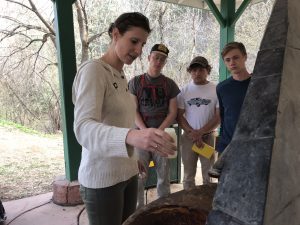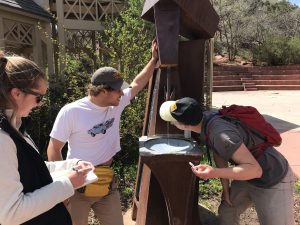Hi, my name is Helen Carter. I am a Junior at Colorado College and a geology major. This block one of the featured courses is “Geofluids” taught by Professor Emily Pope. I am currently taking this class and will be updating everyone on what we’re learning about for the next few weeks.

On Monday, we dove straight into the course by learning about what geofluids are. Put simply, they are gases and liquids that flow through the different spheres of the Earth. Why is this important? The flow of fluids is the dominant mechanism for transporting mass and energy through the spheres. On Monday we also discussed how the Earth formed and how/why it is so different than other planets in our solar system. The afternoon was spent using a website titled, “Build Your Own Earth”. We used this to learn about controls on climate and the environmental consequences of atmospheric changes.
Tuesday was a shift to the more chemistry and physics side of geofluids—the thermodynamics and geochemistry behind the movement of liquids and gases on Earth. The afternoon portion of class was spent exploring the mineral water springs in Manitou. During the fieldtrip we tested all of the springs in Manitou by recording pH levels, temperature, and collecting samples for further analysis in the CC labs. Some of us used more professional techniques of drinking water from each spring and comparing how they all tasted.

Today we began the day off by discussing “Air density 2.7 billion years ago limited to less than twice modern levels by fossil raindrop imprints” by Som et al. (2012). This paper related to the “Build Your Own Earth” project that we worked through on Monday. Som et al. used raindrop imprints to determine air density 2.7 billion years ago. The reason for this was to help solve the ‘Faint Young Sun’ paradox—the Archaean sun was apparently about 20% dimmer than the modern sun but the Earth still had liquid water and a warm climate during this period. The rest of the class was spent learning about subduction zones and the possibility of large amounts of the water on Earth being lost to the mantle.
The rest of the week will be spent learning more about how to describe thermodynamic systems and the details of ocean chemistry. We will also do further analysis on the Manitou water samples. I look forward to sharing more about this class and I hope everyone enjoyed reading about what we’re doing!
wonderful post! A lively read.
Thanks for sharing! What you’re learning about sounds really interesting.